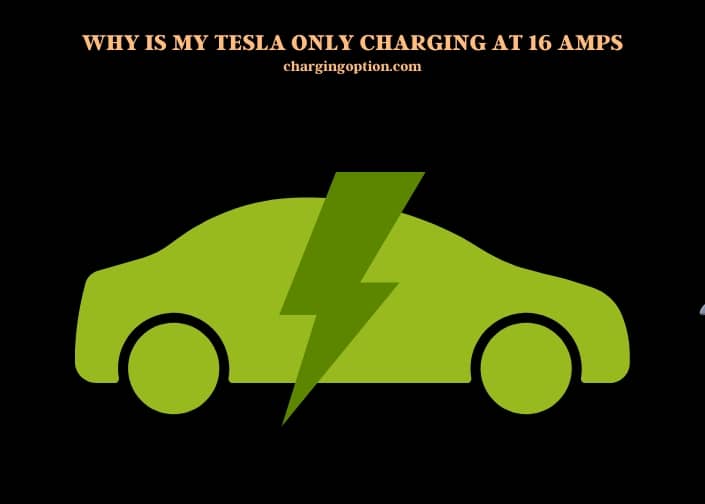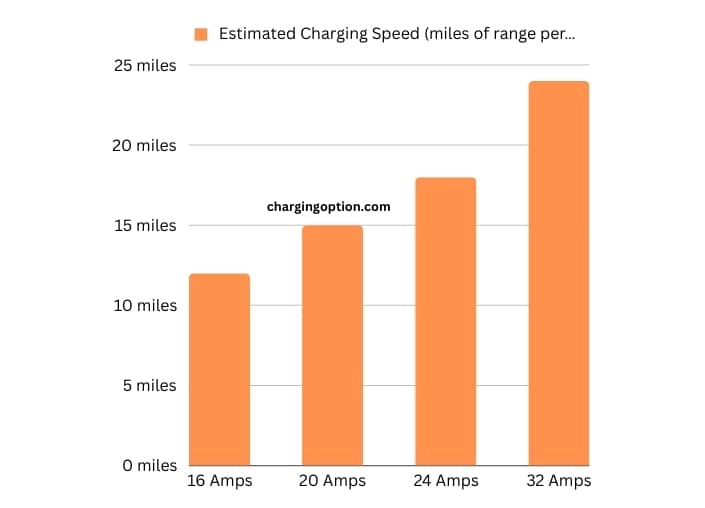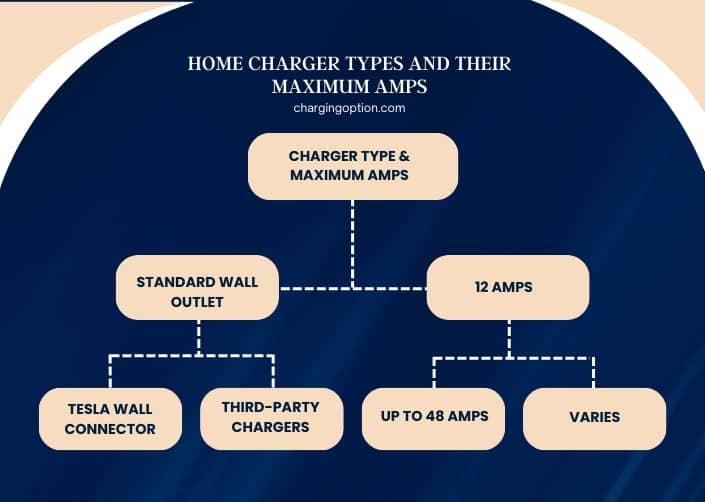Your Tesla may be charging at 16 amps due to specific settings or limitations in your charging equipment or electrical system. It’s essential to check both your vehicle’s settings and the capacity of your charging setup.
Tesla vehicles are renowned for their cutting-edge technology and efficient charging systems. However, sometimes owners might notice their Tesla charging slower than expected, often at a rate of 16 amps. This reduced charging speed can be attributed to several factors. One primary reason is the setting in the vehicle itself. Tesla cars allow owners to adjust the charging current, which can be set lower to match the capacity of certain home charging setups or to extend battery life.
Another factor is the capacity of the home charging equipment. The Tesla Wall Connector, for instance, can deliver different charging speeds based on how it’s installed and the home’s electrical capacity. If the installed electrical circuit has a lower capacity, the charging speed will be limited to protect the circuit from overloading. Additionally, the use of third-party charging equipment or adapters not optimized for Tesla vehicles can also result in slower charging speeds.

Environmental conditions can also play a role. In extremely cold temperatures, the battery management system limits the charging speed to ensure the battery’s health and longevity. This precaution is vital for maintaining the battery’s efficiency and lifespan.
For Tesla owners seeking more detailed insights into optimizing their charging setup and understanding the factors affecting charging speeds, a thorough article is available below. This article provides in-depth information to help you maximize your Tesla’s charging efficiency and troubleshoot any issues related to charging at lower amps.
Why is My Tesla Only Charging at 16 Amps?
Tesla’s Charging Mechanism
Electric Vehicle Charging
Electric vehicles (EVs) like Teslas use a unique approach to charging, different from traditional fueling methods. At the heart of this process is the conversion of AC power from the grid to DC power that charges the car’s battery. This conversion is crucial as it determines how quickly the battery can be charged. Understanding this basic mechanism helps in grasping why certain charging limits, like 16 amps, might occur.
Tesla’s Unique Charging Technology
Tesla’s charging technology stands out in the EV world. It’s designed to be fast and efficient, but sometimes you might find your Tesla charging slower than expected. This could be due to several factors, which we’ll explore in this article. Knowing how Tesla’s technology works is the first step in solving the mystery of a 16-amp charge limit.
Vehicle Settings Impacting Charging Speed
Overview of Tesla’s Adjustable Charging Settings
Your Tesla comes with adjustable settings that directly influence how fast it charges. These settings are there to give you control over the charging process, allowing you to balance charging speed with factors like battery health and the capacity of your charging setup.
How to Access and Modify Charging Settings in Your Tesla
Accessing and modifying these settings is straightforward. You can do it right from your car’s touchscreen. It’s a matter of a few taps to adjust the amperage, which can significantly affect the charging speed. If you’ve unintentionally set it to a lower value, like 16 amps, this could be why your charging seems slow.
Comparison of Charging Speeds at Different Settings
| Charging Setting (Amps) | Estimated Charging Speed (miles of range per hour) |
| 16 Amps | 12 miles |
| 20 Amps | 15 miles |
| 24 Amps | 18 miles |
| 32 Amps | 24 miles |

Home Charging Equipment and Its Capacity
Types of Home Charging Solutions for Tesla
When it comes to charging your Tesla at home, you have a few options. You can use a standard wall outlet, a Tesla Wall Connector, or third-party charging equipment. Each of these options has its own capacity and limitations, which can affect your charging speed.
Assessing the Electrical Capacity of Home Chargers
The key to efficient charging is ensuring your home charger matches your Tesla’s needs. If your home charging setup is not capable of delivering more than 16 amps, this will limit your charging speed. It’s essential to assess the capacity of your charger and possibly upgrade it for faster charging.
Home Charger Types and Their Maximum Amps
| Charger Type | Maximum Amps |
| Standard Wall Outlet | 12 Amps |
| Tesla Wall Connector | Up to 48 Amps |
| Third-Party Chargers | Varies |

The Role of External Adapters and Equipment
Using Third-Party Charging Equipment with Tesla
While Tesla’s own charging equipment is optimized for its cars, you might sometimes use third-party chargers. These chargers can vary in compatibility and efficiency, potentially affecting your charging speed.
Potential Impact on Charging Speed and Efficiency
If a third-party charger or adapter isn’t fully compatible with Tesla’s technology, it might limit the charging speed. This is often seen when the charger can only provide a maximum of 16 amps, leading to slower charging times.
Compatibility and Safety Considerations
It’s not just about speed; safety is also a concern. Using incompatible chargers can pose risks, so it’s crucial to ensure that any third-party equipment you use is Tesla-approved and safe.
Environmental Factors Affecting Charging
Temperature and Its Effect on Tesla Battery Charging
Did you know that the temperature can affect how your Tesla charges? In colder climates, the battery management system limits the charging speed to protect the battery’s health. This could be why you’re experiencing a 16-amp charge limit during winter months.
Managing Charging Expectations in Extreme Weather Conditions
Understanding this, it’s important to manage your expectations regarding charging speeds in extreme temperatures. Your Tesla is designed to prioritize battery health, which might mean slower charging under certain environmental conditions.
Troubleshooting Slow Charging Issues
Step-by-Step Guide to Diagnosing Charging Speed Problems
If you’re facing slow charging issues, there’s a systematic way to troubleshoot. Start by checking your vehicle’s charging settings, then assess your home charging equipment. Don’t forget to consider external factors like temperature and the use of third-party equipment.
When to Seek Professional Assistance
If you’ve gone through all these steps and still face issues, it might be time to seek professional help. Tesla’s customer support or a certified electrician can provide assistance and ensure your charging setup is optimized.
Maximizing Your Tesla’s Charging Efficiency
Best Practices for Optimal Charging
To get the most out of your Tesla’s charging capability, follow best practices. This includes using Tesla-approved charging equipment, regularly checking and adjusting your vehicle’s charging settings, and being mindful of environmental conditions.
Upgrading Your Home Charging Setup
Consider upgrading your home charging setup if you’re consistently facing slow charging speeds. A higher-capacity charger can make a significant difference in how quickly your Tesla charges.
Efficiency Ratings of Different Charging Setups
| Charging Setup | Efficiency Rating |
| Standard Wall Outlet | Low |
| Tesla Wall Connector | High |
| Third-Party Chargers | Medium |
FAQs
Can Software Updates Affect Tesla Charging Speeds?
Yes, software updates can impact your Tesla’s charging speed. Tesla frequently releases updates that can optimize or modify various aspects of the vehicle, including its charging capabilities. Sometimes, these updates are designed to improve battery longevity and efficiency, which might temporarily reduce charging speeds under certain conditions. It’s always a good idea to check the release notes of software updates to see if there are any changes related to charging. If you notice a change in charging speed post-update, it’s likely due to new software optimizations.
Is a Low Charging Rate at Supercharger a Common Issue for Teslas?
Yes, low charging rates at Superchargers can be a common issue for Teslas. The key to fixing Tesla charging issues at Supercharger is to make sure the car’s software is up to date and to check for any physical obstructions in the charging port.
Is It Normal for Tesla Charging Speed to Fluctuate?
Fluctuations in charging speed are normal for Tesla vehicles. Several factors can cause these variations, including the state of the battery, the car’s immediate power needs, and the condition of the charging equipment. For instance, if the battery is nearing full capacity, the car will automatically slow down the charging speed to protect the battery’s health. Similarly, if the car is using power for other functions like climate control, the available power for charging might be reduced, leading to fluctuations in charging speed.
Does the Age of a Tesla Battery Affect Charging Speed?
The age of a Tesla battery can influence its charging speed. As lithium-ion batteries age, their capacity to hold a charge diminishes, and they may charge more slowly. This degradation is a normal part of the battery’s lifecycle. Tesla batteries are designed to last many years and retain a significant percentage of their original capacity, but slight decreases in charging speed over time can be expected. Regular battery maintenance and following Tesla’s charging recommendations can help maximize the battery’s lifespan and maintain optimal charging performance.
Can the Length of the Charging Cable Impact Charging Speed?
The length of the charging cable can have a minor impact on charging speed. Longer cables may experience a slight drop in voltage due to resistance, especially if they are not designed or rated for high-power charging.
Tesla’s cables and recommended third-party cables are typically designed to minimize this loss. The impact is usually negligible for the lengths commonly used for home charging. If you’re using an unusually long cable and notice a significant decrease in charging speed, consider switching to a shorter, higher-quality cable.
Will Using Multiple Electrical Devices at Home Affect Tesla Charging?
Using multiple high-power electrical devices at home can affect your Tesla’s charging speed if your home’s electrical system is nearing its capacity limit. Most homes have a certain capacity for electrical usage, and if multiple devices are drawing power simultaneously (like HVAC systems, electric stoves, and the Tesla charger), it can strain the system. This strain might cause your home charger to reduce its output to prevent overloading the circuit, resulting in slower charging speeds. It’s advisable to monitor overall power usage during peak charging times.
Can Frequent Supercharging Affect Home Charging Speeds?
Frequent use of Tesla Superchargers should not affect the home charging speeds of your Tesla. Supercharging is designed to provide a rapid charge when you’re on the road and is managed by the car’s onboard charging system to ensure battery health. The technology used in Supercharging is separate from your home charging setup. However, it’s worth noting that consistent reliance on Supercharging can lead to changes in the battery’s chemistry over time, which might indirectly influence overall charging behavior, but this is generally a long-term effect rather than an immediate change in home charging speeds.
Summary
In this article, we’ve looked at various factors that could lead to your Tesla charging at only 16 amps. From vehicle settings and home charging equipment to environmental factors and third-party gear, understanding these elements is key to solving the charging speed puzzle. Remember, your Tesla is a sophisticated machine, and taking care of its charging needs ensures you enjoy the best performance it has to offer.
